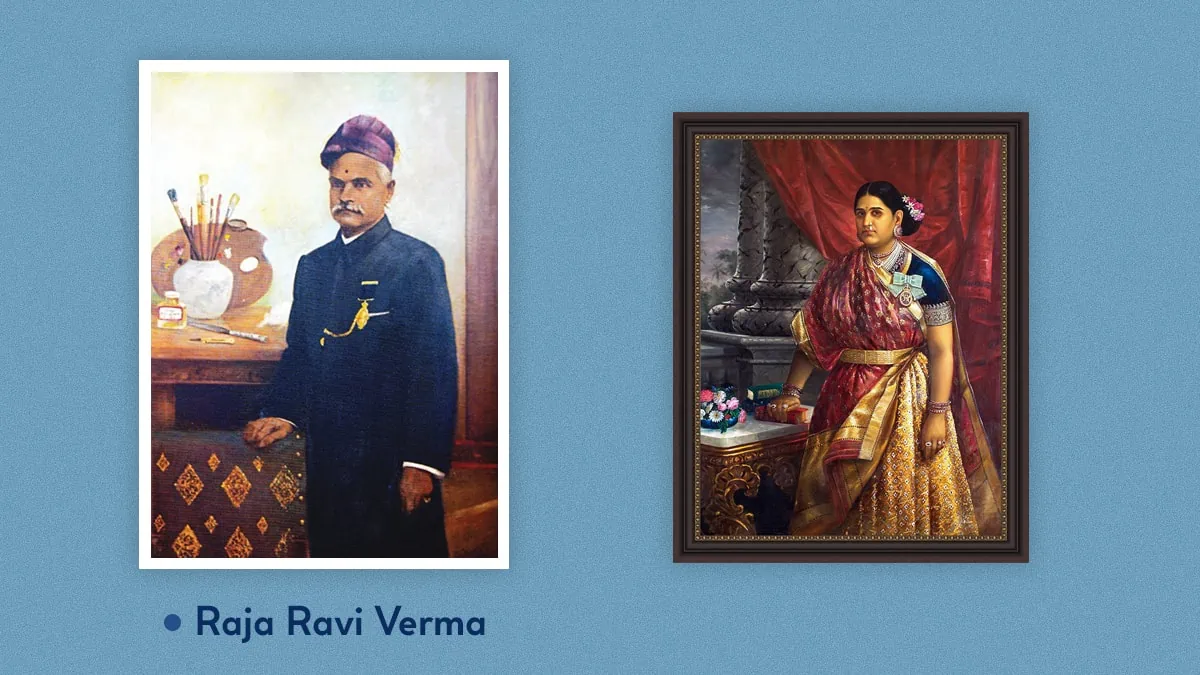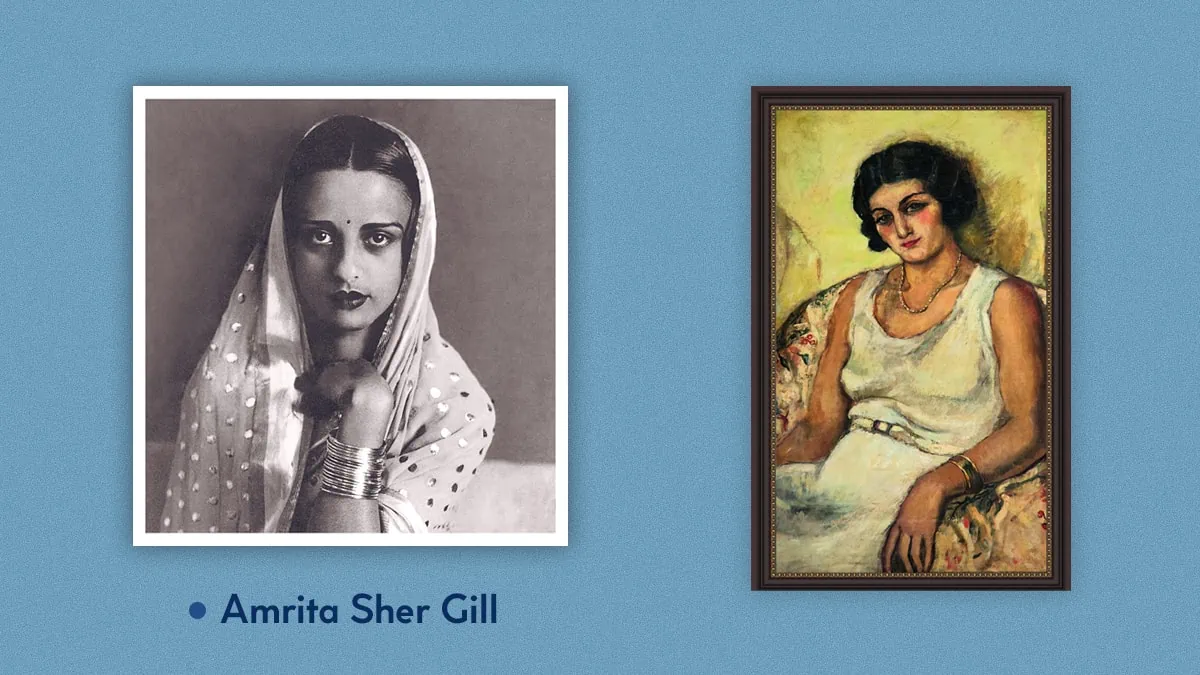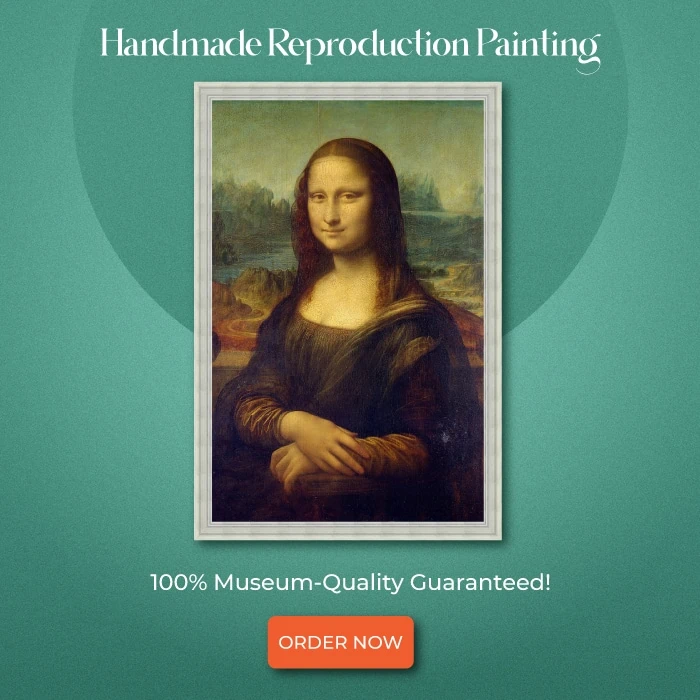What if I asked you to imagine a place filled with culture, vibrant lanes and some of the best delicacies around the world?
Not only that, but the place you’re imagining is also known as the birthplace of yoga and some of the most renowned art forms hail from this region.
Does it all ring a bell?
The place I am talking about is none other than the beautiful land of India!
A country known for its rich culture, food and, oh, of course, we can’t let Bollywood slide.
But amid these factors, one of the gems that we don’t talk about often is Indian art.
To polish and cherish this gem, there were a lot of famous Indian painters who struggled through controversies and critiques to make their way out.
So, to learn how the famous Indian painters paved the way for Indian art around the globe, follow me through this blog.
Table of contents
Brief About Indian Art
India and art go hand in hand but we can’t forget that traditional art was developed and evolved here as well.
India’s artistic output is truly astounding, as it appears to be vast, varied, and eerily beautiful—almost like something out of a storybook.
Taking the example of the Ajanta and Ellora caves, they are truly works of art, aren’t they?
There are many other instances from the art world that hint toward India and its extremely talented artists.
The famous Indian painters are noted for their creativity, use of mediums and use of various subjects in their paintings.
So, let’s dig in to get to know 6 famous painters from India who truly were remarkable and a source of inspiration to a lot of artists till date.
Famous Indian Painters
If you are lost, then let the art find you!
With this quote, I would like to start the list of some of the most famous Indian painters who let art define them.
Raja Ravi Varma

| Date Of Birth | 29 April 1848 |
| Art Movements/ Period | Academic Art |
| Awards | Kaisar-i-Hind Medal |
| Date of Death | 02 October 1906 |
| Notable Artworks | Shakuntala, Damayanti, etc. |
This is the list of the famous Indian painters and of course we have to start with the father of Indian art, i.e., Raja Ravi Varma.
Hailing from Kerela, Raja Ravi Varma has had immense passion and love for painting since a very young age.
It is no surprise since his father was a renowned scholar and his mother was a writer so he had it in his genes.
He started off painting characters like animals, scenery, etc., and when he turned 14, he moved to Thiruvananthapuram to seek coaching from his palace painter, Rama Naidu.
He is claimed to be the first person to start painting in India. In the beginning of his painting career, he used leaves, flowers and natural tints.
Later on, he started using oil paints.
Raja Ravi Varma, during the 18th century, started painting portraits and was a notable painter in the British era as well.
Moving further in his career, he focused more on defining the beauty of South Indian women and his paintings involved the same.
Amrita Sher Gil

| Date Of Birth | 30 January 1913 |
| Art Movements/ Period | Modern Indian Art |
| Awards | Gold Medal as Associate of the Grand Salon in Paris |
| Date of Death | December 1941 |
| Notable Artworks | Bride’s Toilet, Sleeping woman, etc. |
If you are an art enthusiast, then it is a fact that you must be aware of Frida kahlo.
But don’t worry, I am not talking about Frida Kahlo; instead, I am talking about the Indian Kahlo, i.e., Amrita Sher Gil.
Hungarian-Indian by birth, Gil hails from Budapest, but most of her work-life was in India, which is why she is considered one of the most famous Indian painters.
Even though she succumbed to death at the mere age of 28, she had her name noted since a very young age.
Gil started painting at the age of 5 and even took painting lessons when she was just eight.
One of her best-known works, “Young Girls,” was brushed down in 1932, and it was this achievement that made her eligible for the 1933 Associate of the Grand Salon in Paris.
Currently, Amrita is the only Asian artist to have won this distinction and the youngest artist overall.
Not only she focus on the sensuality and sexuality of women but also appreciated the locals and pahadis in her paintings.
Amrita proudly quoted that Europe belonged to prominent names like Matisse, Picasso, Braque, etc., whereas she belonged to India.
One of her untitled self portrait was sold at Sothbey’s for a whopping amount of: 21 crore INR.
Suggested Read: Paintings by Frida Kahlo
Jamini Roy

| Date Of Birth | 11 April 1887 |
| Art Movements/ Period | Indian folk Art |
| Awards | Padma Bhushan |
| Date of Death | 24 April 1972 |
| Notable Artworks | Three Pujarins,” “Alpona Dancers,” and “Mother and Child”. |
One of the famous Indian painters who hailed from Kolkata was one of the noted pupils of Abanindranath Tagore.
Jamini Roy was not only a famous painter but was also a well-versed instructor.
His artwork celebrated the simplicity of life and was filled with hints of indigenous culture.
Roy was an artist who received the Indian civil award Padma Bhusan in 1955.
It was said that his artwork was heavily inspired by his folk-styles, bold lines, flat colors and compositions that revolved around rural India.
With training in the British academic school of painting, Jamini Roy rose to prominence as a talented portrait painter.
Following his graduation in 1916 from the Government Art School in Kolkata, he was consistently commissioned.
M. F. Hussain

| Date Of Birth | 17 September 1915 |
| Art Movements/ Period | Modern Cubist and Contemporary art |
| Awards | Padma Vibhushan, Padma Bhushan, Padma Shri, National Film Award for Best Experimental Film |
| Date of Death | 09 June 2011 |
| Notable Artworks | “Mother Teressa”, “Lady with Veena”, and “Ganga and Jamuna,” |
One of the biggest prodigies of the art world, a name that is noted amongst every art lover or even if you are not an artist, there are possibilities that you might know him.
I am talking about one of the famous Indian painters, M. F. Hussain!
Despite having a rough and rocky childhood, Hussain made his way to a flashy and controversial youth and a successful career as an artist.
What started off as an interest in calligraphy turned out to be the deep development of a love for folk and contemporary art.
Even though his work was staged in international shows and galleries, he was forced to leave India and flee to Qatar as his paintings related to Indian deities were under massive criticism.
Hussain’s work was heavily influenced by the style of cubism and he wanted to overshadow the works of Pablo Picasso as well.
When asked about his aspirations and further approach in art, he always used to say: “I am a misfit in the mainstream of contemporary Indian art.”
“Ganga and Jamuna,” an exquisite piece that brought in INR 11.5 crore at Christie’s auction.
This was a brief story about the famous Indian painter who was forced to deport from his own birthplace.
V.S.Gaitonde

| Date Of Birth | 02 November 1924 |
| Art Movements/ Period | Abstract expressionism |
| Awards | Kalidas Samman |
| Date of Death | 10 August 2001 |
| Notable Artworks | Untitled series of Artworks |
There are people who often go unnoticed even under the bright light of fame, this was the case for V. S. Gaitonde.
One of the best selling and most famous Indian painters, Gaitonde was often labelled as the “goat” of Indian art.
He was the creator of one of the most expensive untitled painting by an Indian to be sold at Christie’s.
Not only was he an expressionist but a core follower of Zen Buddhism, and his friends and relatives often define him as a Zen guy.
It is assumed that, being one of the highest selling painters, he must’ve lived a life of luxury. Although the story was just the reverse, he lived in a one-room rental.
He believed in a very simple lifestyle and that is why, in an interview, he also made a remark that sits with me as well:
“Everything starts with silence. The silence of the brush, silence of the canvas, silence of the painting knife. The painter starts by absorbing all these silences. You are not partial in the sense that no one part of you is working there. Your entire being is.”
Later in his career, he was labelled as one of the most famous abstract artists from India and was a proud recipient of the Padma Shri.
Additionally, he was one of the founding six members of the Indian Progressive Artists Group.
Suggested Read: Art Of Abstraction
Tyeb Mehta

| Date Of Birth | 26 July 1925 |
| Art Movements/ Period | – |
| Awards | Kalidas Samman and Padma Bhushan |
| Date of Death | 02 July 2009 |
| Notable Artworks | Celebration, The Rickshaw Puller, etc. |
One of the most influential painters from India and co-founders of the Bombay Progressive Artists’ Group was Tyeb Mehta.
Known by his friends and family as a very down-to-earth man, Tyeb’s art was often labelled as depressing and disturbing by many viewers.
The reason behind it is that when he was 22-years-old, he witnessed the partition of India and also saw a man being beaten to death in front of his eyes.
This incident left a mark on his mind and always used to disturb him, which is why he fled to London and stayed there for the following years.
Upon his comeback to India, he created many paintings, including Mahishasur, one of the most thrilling Indian contemporary paintings.
As a matter of surprise, it was sold off at a whopping price of INR 11 crore at an auction at Christie’s.
He loved his art way too much and that is what was proven by one of his statements in the interview, in which he said:
“I have always been a loner, and am still quite a bit of a recluse. My happiest moments are spent with myself and my art.”
Tyeb’s artworks were dedicated and hinted towards the martyrs and also to their mourning families.
In 1968, Tyeb took home the coveted Prix Nationale at the International Festival of Painting in Cagnes-sur-Mer, France, as well as his first gold medal at the inaugural Triennial in New Delhi.
PS:-
These artists were some of the most famous Indian painters but this list goes way beyond these 6 painters that I have talked about.
The list also includes some phenomenal artists like: S. H. Raza, Ram Kumar, Abanindranath Tagore, etc.
So, we will try to bring another part of this blog that will include the famous Indian painters that were missed in this blog.
Stay tuned!
Conclusion
Here comes the end of the vivid journey of some of the famous Indian painters.
Even though there is a long list of people who have shared their contributions in the Indian art world, I have made sure to discuss the most renowned artists.
Also, there were many prominent art moments that took place in India during the rise of art in general.
And if you think that the lives of these famous Indian artists were smooth as butter, then no, their lives were rocky and challenging.
Yet, they overcame the challenges and their artwork shone brightly around the world.
Not only this, but some of the paintings by Indian artists are housed in many prestigious art museums and galleries and were auctioned off for millions of dollars.
It’s interesting, isn’t it?
If this fascinates you, then you might want to take a look at what we have in store for you!
You can also commission some of the artworks that will make heads turn!
FAQ
The three renowned and famous Indian artists are: M.F. Hussain, Tyeb Mehta and Ram Kumar.
Amrita Sher Gil was renowned because she was one of the youngest and the first female to accept a gold medal at the Paris Salon.
M.F. Hussain was an Indian painter who was criticized a lot for his paintings as they revolved around god and other issues in India.
Sir Raja Ravi Verma is the father of Indian art.





